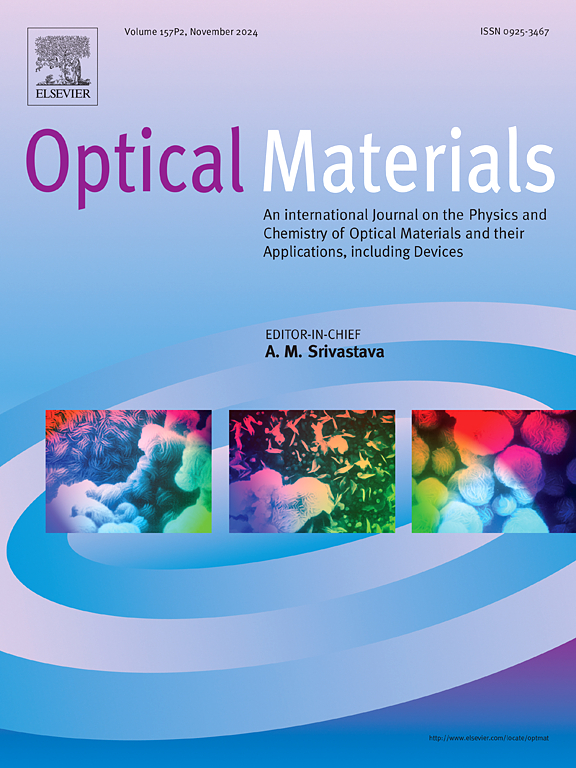铌薄膜椭偏测量的介电函数
IF 3.8
3区 材料科学
Q2 MATERIALS SCIENCE, MULTIDISCIPLINARY
引用次数: 0
摘要
铌具有较高的熔点和化学稳定性,是一种很有前途的高温光子材料。尽管如此,关于其介电函数作为厚度函数的信息还不够充分。在这项研究中,我们用氧化物/薄膜/衬底模型在0.7 eV - 4.5 eV范围内分析了溅射沉积的铌薄膜(8,38和283)-nm厚度的介电函数。值得注意的是,我们的薄膜被沉积成无氧化体,确保光学性能反射表面氧化的干净铌。德鲁德模型用于描述带内跃迁,洛伦兹振子用于描述带间跃迁。正如对金属的预期,对于283 nm厚的薄膜,介电函数的实部为负,而对于38 nm厚的薄膜,介电函数的数量级略有降低。然而,对于最薄的薄膜,它变得正,这归因于穿过渗透阈值,金属岛相互接触形成导电路径,但仍然没有覆盖间隙。介电函数的虚部随厚度的变化呈现非系统的变化,这是由于薄膜的面内和面外形态的变化,影响了电子密度和电子散射率的表面分布。电介质性能与范德保测量的电阻率和扫描隧道显微镜的电导率图吻合良好。本文章由计算机程序翻译,如有差异,请以英文原文为准。
Dielectric function from ellipsometry measurements of niobium films
Niobium is a promising material for high-temperature photonic applications due to its high melting point and chemical stability. Despite this, there is insufficient information about its dielectric function as a function of thickness. In this study, the thickness-dependent dielectric function of niobium films (8, 38, and 283)-nm-thick deposited by sputtering was analyzed with an oxide/film/substrate model over a range of 0.7 eV–4.5 eV. Notably, our films were deposited to have an oxide-free bulk ensuring that the optical properties reflect clean niobium with surface oxide. The Drude model was applied to describe the intraband transitions, while Lorentz oscillators were used for interband transtions. As expected for metals, the real part of the dielectric function was negative for 283 nm-thick films with a slight reduction in magnitude for 38 nm-thick films. However, it became positive for the thinnest film, which was attributed to crossing the percolation threshold, where metal islands touch each other forming conductive paths but with gaps still not covered. The imaginary part of the dielectric function shows nonsystematic variations with changes in thickness, attributed to morphological changes in-plane and out-of-plane of the films, affecting the surface distribution of electron density and electron scattering rate. Dielectric properties show good agreement with the electrical resistivity from Van der Pauw measurements and conductivity maps from scanning tunneling microscopy.
求助全文
通过发布文献求助,成功后即可免费获取论文全文。
去求助
来源期刊

Optical Materials
工程技术-材料科学:综合
CiteScore
6.60
自引率
12.80%
发文量
1265
审稿时长
38 days
期刊介绍:
Optical Materials has an open access mirror journal Optical Materials: X, sharing the same aims and scope, editorial team, submission system and rigorous peer review.
The purpose of Optical Materials is to provide a means of communication and technology transfer between researchers who are interested in materials for potential device applications. The journal publishes original papers and review articles on the design, synthesis, characterisation and applications of optical materials.
OPTICAL MATERIALS focuses on:
• Optical Properties of Material Systems;
• The Materials Aspects of Optical Phenomena;
• The Materials Aspects of Devices and Applications.
Authors can submit separate research elements describing their data to Data in Brief and methods to Methods X.
 求助内容:
求助内容: 应助结果提醒方式:
应助结果提醒方式:


